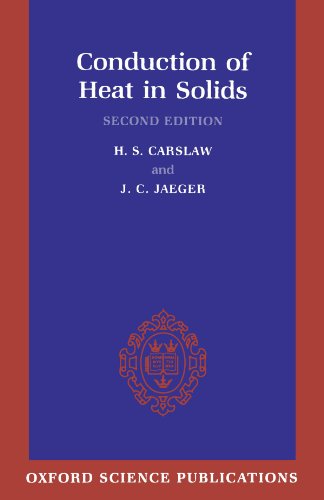Conduction of Heat in Solids pdf
Par cunningham robert le samedi, septembre 3 2016, 23:51 - Lien permanent
Conduction of Heat in Solids by H. S. Carslaw, J. C. Jaeger


Conduction of Heat in Solids H. S. Carslaw, J. C. Jaeger ebook
Publisher: Oxford University Press, USA
Format: djvu
ISBN: 0198533683, 9780198533689
Page: 517
As they vibrate faster, they will collide with neighbouring particles making them vibrate too. SCENE15: Carol, thanks for inviting me to your house!! SCENE8: The heat is tranferred from the hot coffee to the metal spoon. SCENE16: I hope you like it here! Here are quick definitions, how they apply to your attic, and how to fix them: 1. When one end of an object is supplied with thermal energy, the molecules gain kinetic energy and vibrate vigorously. Conduction is essentially heat transfer through solids. Heat can be transferred from one place to another by three different methods, namely Conduction, Convection and radiation. It is also a term that describes processes affecting the atmosphere, waters, and solid earth. I consulted for my work the book "heat conduction in solids" by H.S. Convection is the name for a means of heat transfer, as distinguished from conduction and radiation. The book says at the introduction: "When different parts of a body are at different temperatures heat flows from the hotter parts to the cooler. SCENE7: Conduction is heat tranfer through solids like metal.